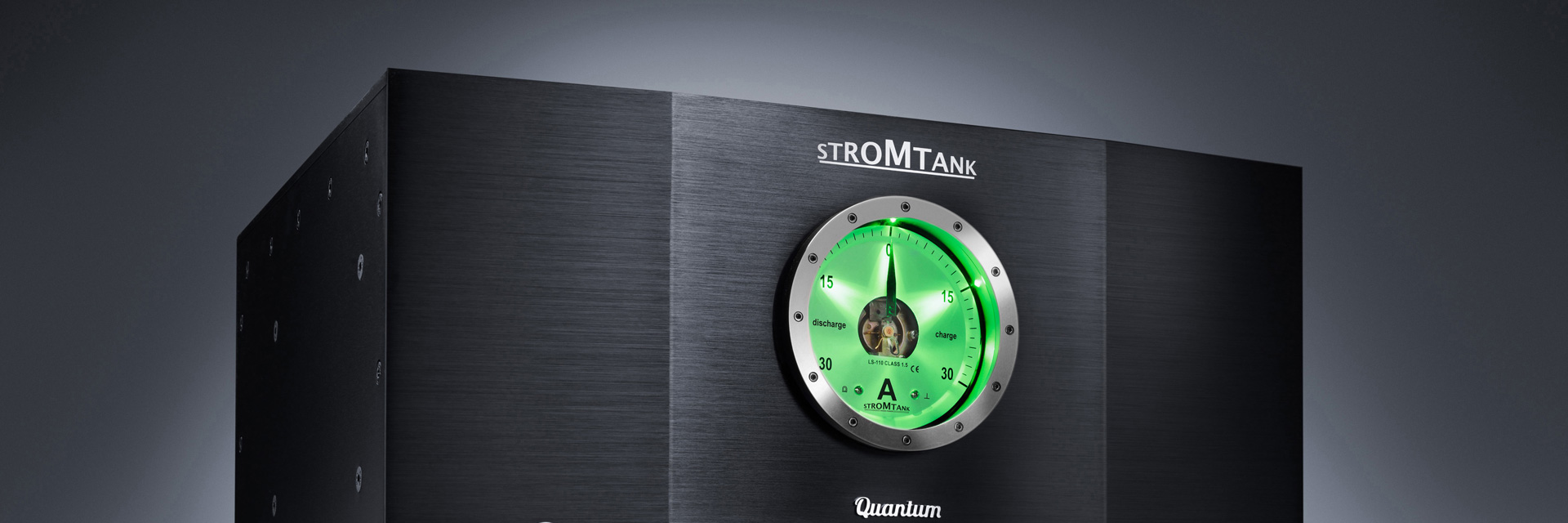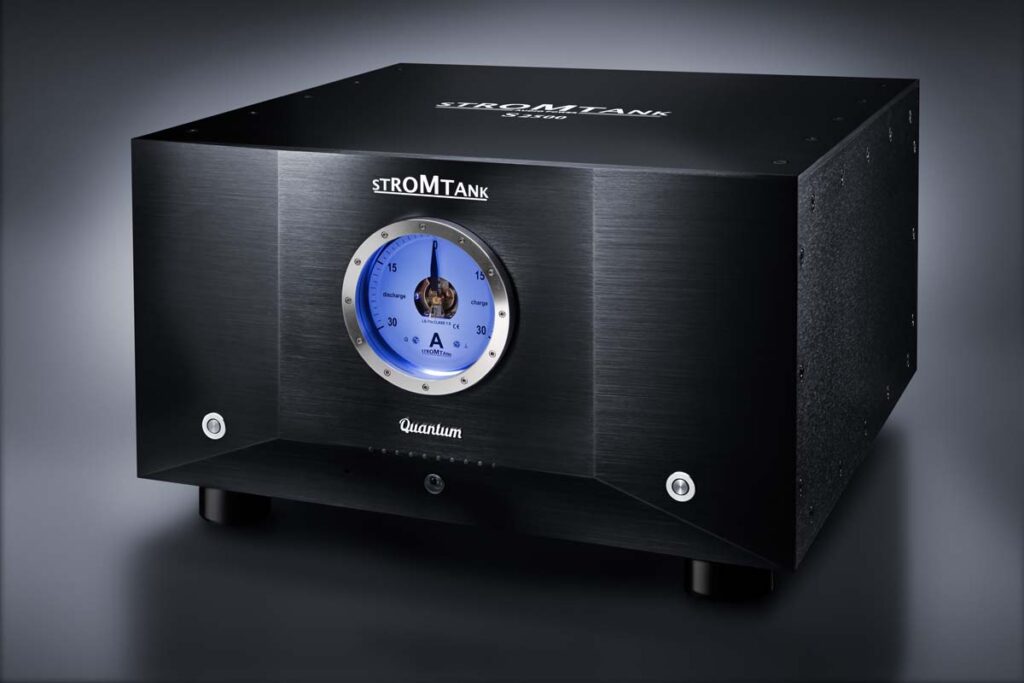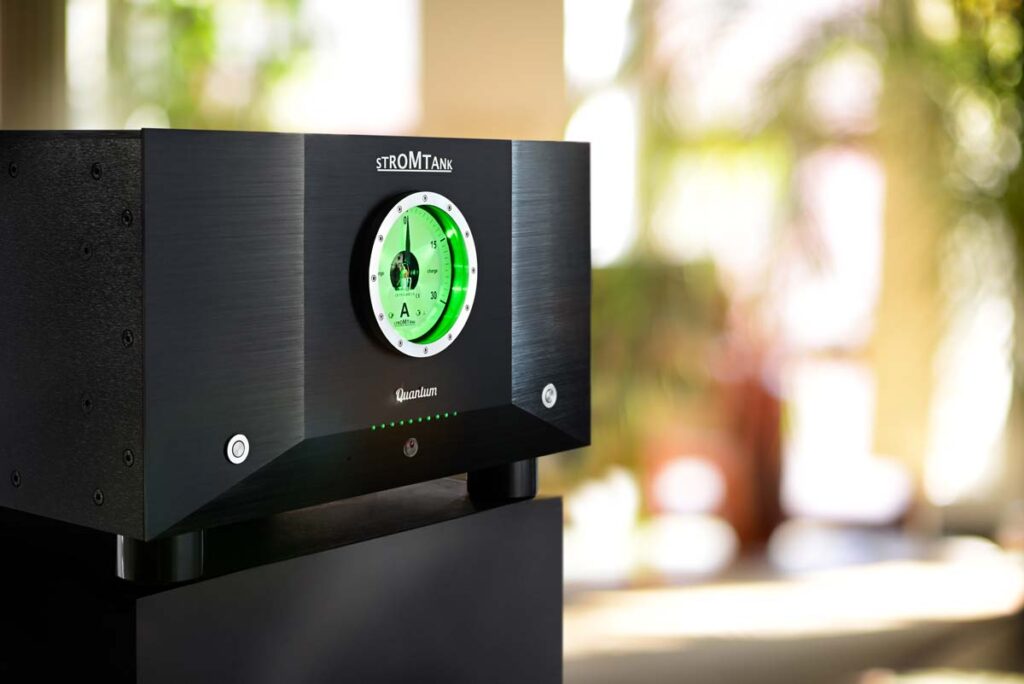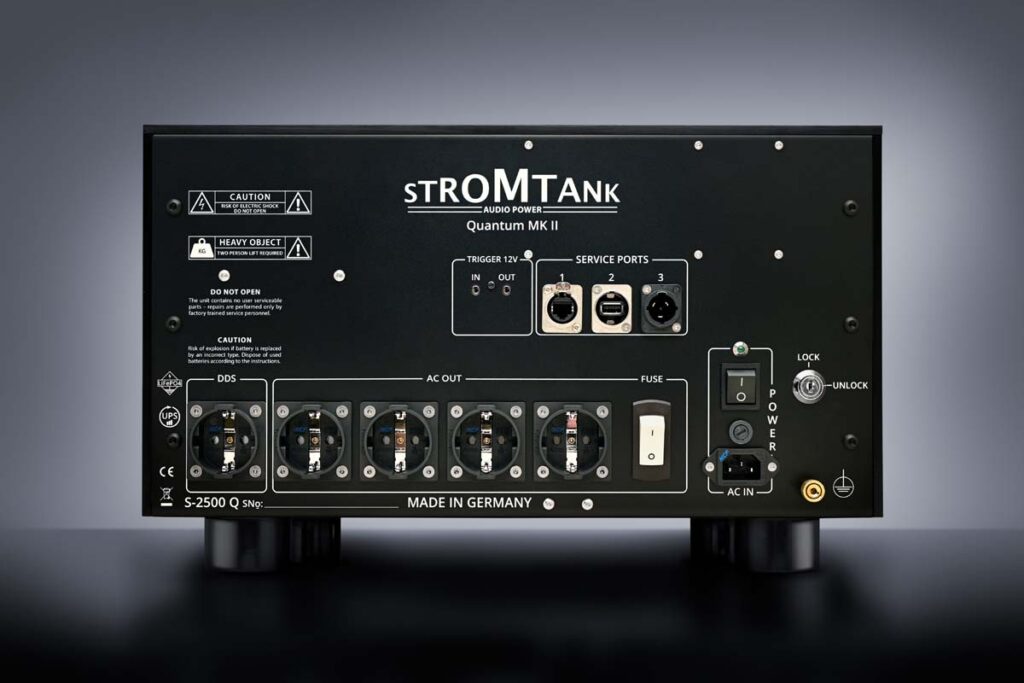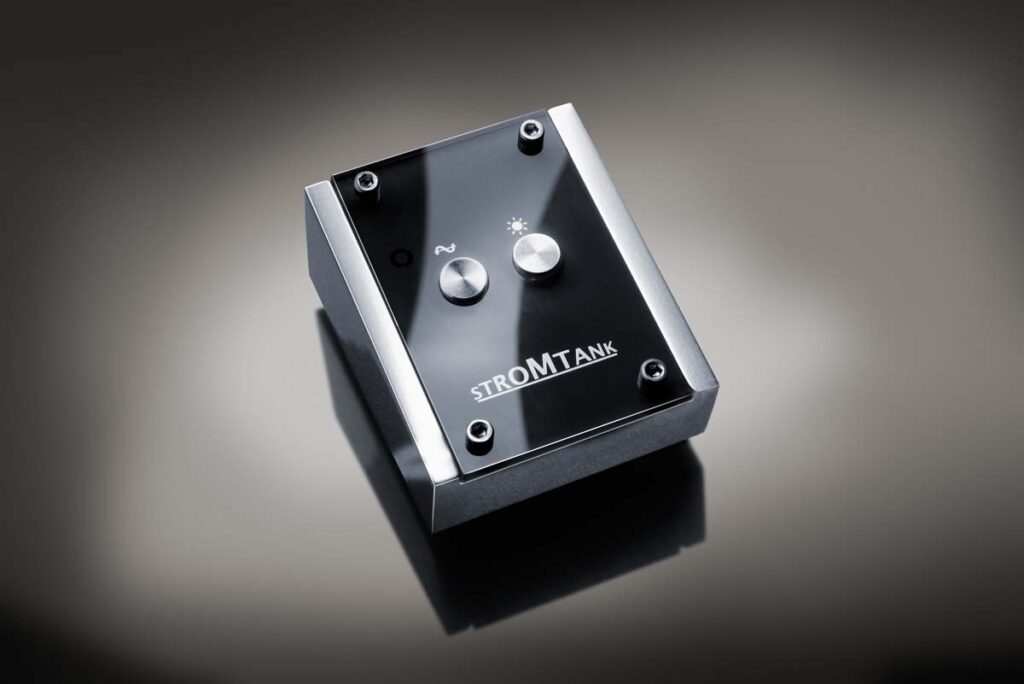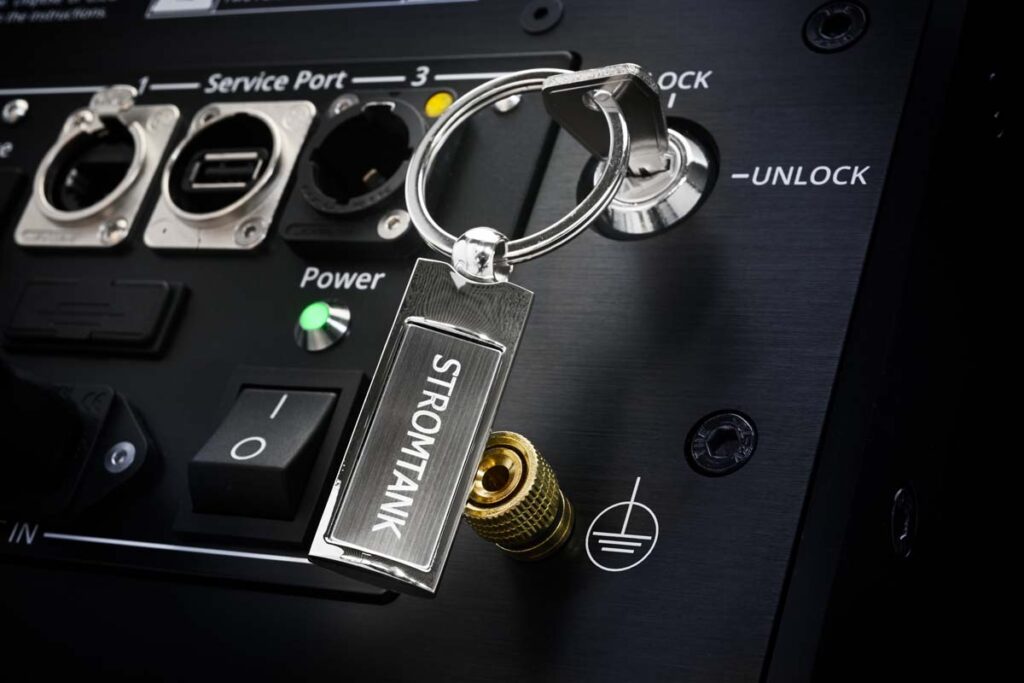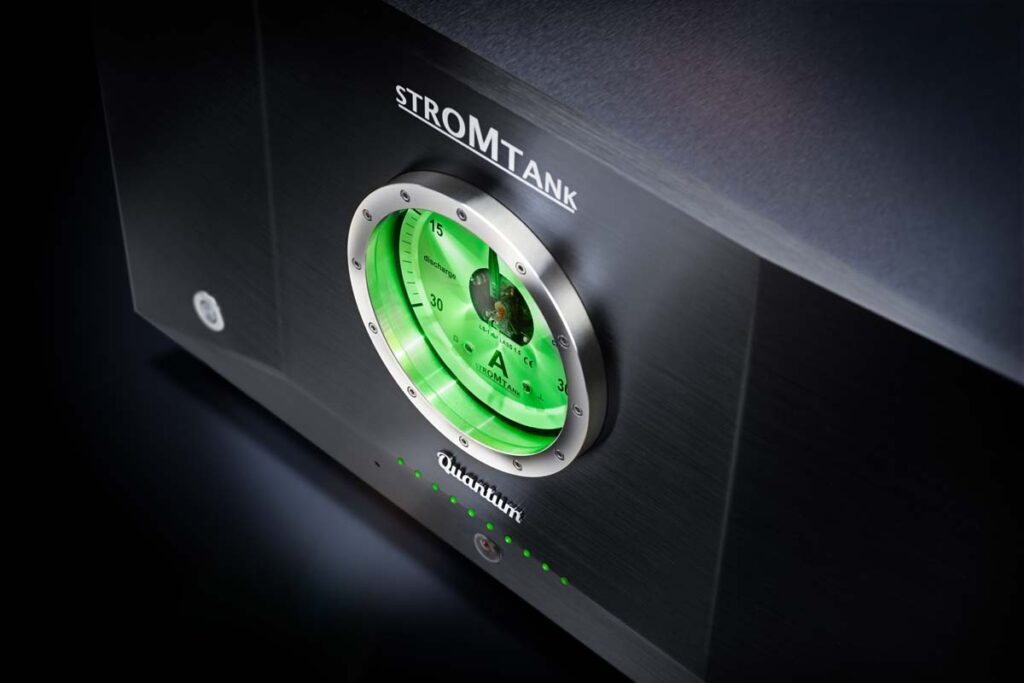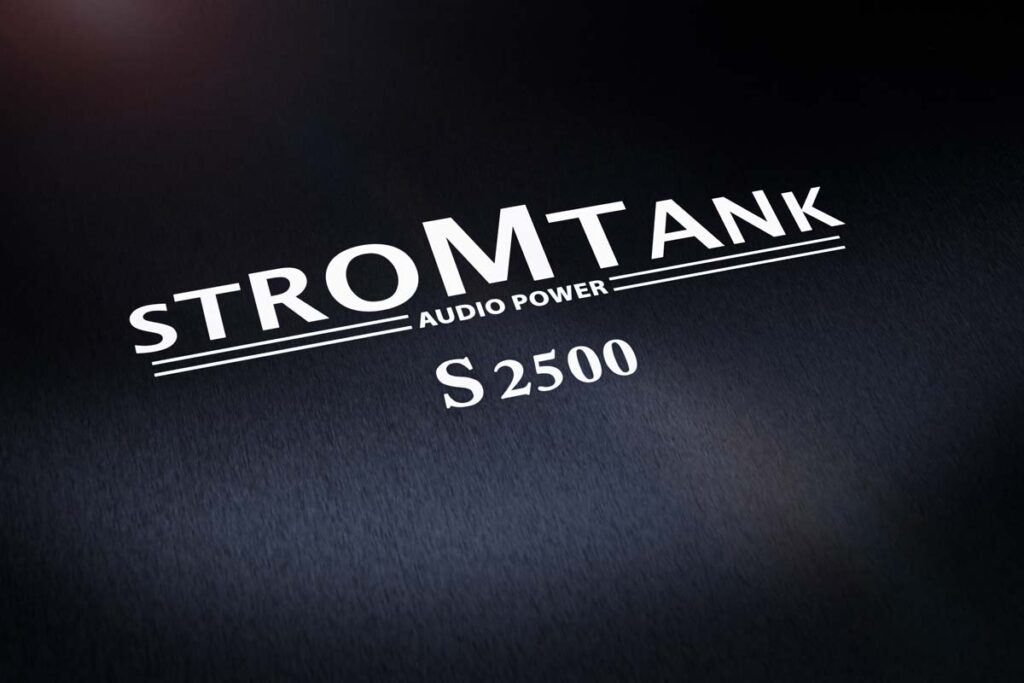The folks at Stromtank don’t do half measures. Is the grid power jittery? Where others use filters, the Berlin-based engineers are maximalists: tabula rasa. Scrap the old, and create something new and better in its place. Let’s see just how well this works.
We high-enders invest a lot of time and money in our setups. Only the best is ever good enough. And nothing can be left to chance. The finest components from source to loudspeaker are a matter of course, and signal paths are channeled between devices through elaborately manufactured wiring using silver conductors and gold contacts. Meanwhile, cable lifts raise the loudspeaker cables off the floor. Finally, of course we don’t feed our precious electronics with raw mains power: a conditioning solution is a must.
Yet the latter measure in particular should be taken seriously. Depending on where you live, you may have neighbors who pay you back for your music by running their washing machines or baking cakes exactly when you want to enjoy a listening session. With myriads of switching power supplies feeding LED lights, plus the occasional photovoltaic system adding insult to injury, this causes the sine wave from the wall to seem sketched by an over-caffeinated mad scientist. Therefore, most of us agree that the power needs conditioning, but how exactly? That’s a matter of debate. A whole range of competing approaches have emerged, from filter solutions and galvanic isolation, to isolating transformers and power regenerators. The latter ultimately work like power amplifiers that send an oscillator-generated sine tone to their output sockets. However, across the board, even with these solutions, you can only control the power on the last mile from the wall socket to the component.
And this is where Stromtank enters. This final step on the path to complete control over the electrical waveform gave the developers no mercy. You can’t very well run a high-end power cord directly from the power station to your power strip. So they looked for ways to completely isolate themselves from the nature of domestic power supply. And at last they arrived at a brute force solution. Instead of smoothing out the distortions of household electricity as they approach the hi-fi chain, the Stromtank S2500 Quantum – the full name of the “mid-range” model – simply stores enough energy in its massive lithium iron phosphate (LFP) cells to run even a power-hungry system for hours on end. Before listening, the power tank is simply switched from charging/mains operation to battery operation, and within 10 milliseconds the energy silo is mechanically disconnected from the mains in all phases via relays. As the batteries put out frequencyless direct current, any irregularities from the outlet are drowned in a homogeneous energy sea. Then, to make this usable for the system, inverters at the other end ensure that the Stromtank puts it out as a 50 hertz sine wave. At this point you are completely independent of the nature of grid power, as the connection is physically cut.
“Our” Stromtank is the second smallest model and stores a total of 2100 watt hours in 16 cells with a nominal voltage of 48 volts. This should be good for several hours of continuous listening even with beefy Class A/B power amplifiers. Its remarkable weight of 57 kilograms is not just due to the capacity, but also the use of LFP batteries. Lithium-ion or lithium-polymer cells could have made the device lighter, but the Stromtank developers focused on durability and, above all, safety. Anyone who has ever seen a smartphone explode will not want to experience the same with this size of battery. Luckily, lithium iron phosphate is harmless in this respect, which is why more and more electric car manufacturers are relying on this battery technology despite the higher mass. As it turns out, the high weight figure is only a short-term problem: once the Stromtank is in place, it remains there. Like every Stromtank, the 2500 only has four outlets, as the models differ by storage capacity and output power. If you want to operate more components, then you need to connect a power strip to one of the outlets (preferably one from Stromtank, of course, although any other will do).
Four outlets is actually not quite right: in addition to the regular outputs, there is a fifth, separate socket labeled “Digital Distortion Suppression” (DDS). This is specially designed for source devices with switching power supplies, as these can cause switching noise that should be filtered out. The problem with a low-pass filter is that it eliminates the HF interference, but simultaneously slows down the power supply by cutting off all higher frequencies. But developers found an elegant way around this: Since the interference frequencies of switching power supplies sit in a relatively narrow frequency band that is the same across all devices, an analog notch filter was used instead of a low-pass filter. This suppresses the problematic wavelengths, yet allows higher frequencies to pass through unhindered, thus it doesn’t throttle the speed of the power supply. Taking the fifth outlet into account, there should be enough space for most setups, even without a power strip.
Anyone who’s witnessed a Stromtank at a hi-fi show knows that these devices are hardly inconspicuous auxiliary components to be tucked out of sight. The awe-inspiring, massive front with the striking, centrally placed round meter would look just as good on a mighty power amplifier. Moreover, the start-up process seems to have been deliberately designed to maximize the experience, as if you’re engaging a small nuclear reactor. Once your component park is connected, you must first unlock it with a key. This ensures that any burglars can’t enjoy high-fidelity music. Next, you set the mains switch to “On” and wait until the display instrument on the front lights up blue, only then can you activate the outputs with the second hard switch (“AC Out”).
Yet before I can enjoy music via the activated machine, some small things must be considered. Pressing a button on the front or using the optional remote control switches the Stromtank between mains/charging mode (blue) and battery mode (green) at any time. While switching to battery mode takes place within 10 milliseconds, switching back takes longer, as the device needs to synchronize with the mains power. You can listen in both modes. In blue mode, the power tank essentially functions like an unusually high-quality power strip. Even though this allows for lightning-fast A/B comparison at the touch of a button, I resist the temptation – to prevent the sudden contrast from exaggerating any sound differences – and only switch between tracks. Nevertheless, I notice an appreciable difference on the first pass already: Holly Cole’s interpretation of “Manhattan” (Shade) is a dense and bustling piece in which the piano and double bass blend into a uniform mash. Played back via the Marten Parker Quintet, which is currently connected to a Burmester 216 power amplifier, everything remains nicely sorted even in mains mode, although the Swedish loudspeakers are far from timid on the low end. Switched to battery mode, the situation becomes noticeably clearer: all the actors are a little better separated from each other, the soundstage seems to gain width and depth. These are all quite subtle changes, but they noticeably increase the listening pleasure. In addition to the selectivity and bigger stage, things I have already heard using some other power conditioners, there is something more. It’s a certain smoothness in the high frequencies that is difficult to describe, which is not particularly noticeable at first, but is pleasantly easy on the ears, especially during longer listening sessions. Next, I put on “Kinema Paranoia” from the Kinoco Hotel album Marianne no Kyouten – psychedelic retro rock produced exactly as you’d expect given the genre name. Once again the battery operation tames the deliberately raucous treble without robbing its snotty energy. It even peels the odd fine detail out of the compressed mess that would otherwise simply drown in the commotion.
Admittedly, it is always a little difficult to assess the effectiveness of power conditioners, as much depends on the quality of the mains power, which can vary considerably from household to household. In any case, during my listening sessions it became clear that a power cleaning solution definitely makes sense in the commercial area where our listening room is located. Most importantly, I believe that if you’re going to do something, you should do it right, and the Stromtank approach truly appeals to me. The result is certainly convincing.
Accompanying Equipment
CD players: Accuphase DP-570, Audio Note CD 3.1x, Esoteric K-05XD | Network players/streamers: Lumin P1, Aavik SD-880, T+A PSD 3100 HV | D/A converter: Benchmark DAC3 B | Pre-amplifiers: Accuphase C-2300, Electrocompaniet EC 4.8 Mk II | Power amplifiers: Accuphase P-7500, Burmester 216 | Loudspeakers: Nubert nuZeo 15, Marten Parker Quintet, Wilson Audio Sasha DAW | Cables: WestminsterLab, AudioQuest, in-akustik | Rack: Beaudioful
Mains power conditioner Stromtank S2500 Quantum
Concept: battery-based power storage unit that can be disconnected from the mains in all phases | Input: 1 x C13 | Outputs: 4 x unfiltered, 1 x DDS (Digital Distortion Suppression) | Battery configuration: 16 LFP cells with 48 V nominal voltage | Power storage capacity: 2100 Wh | Output power (continuous/3 min/3 s): 650 VA/1100 VA/2600 VA | Special features: switchable between mains and battery operation in < 15 ms, optional remote control | Finish: black aluminum | Dimensions (W/H/D): 48/31/45 cm | Weight: 57 kg | Warranty period: 3 years | Price: around 24 900 €
Stromtank
Rathenower Street 45
10559 Berlin
Phone +49 30 52688330
info@stromtank.com

